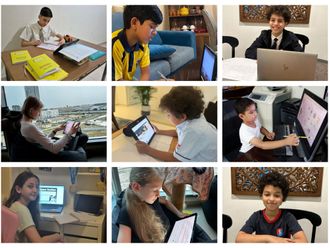
Where do potential students hang out these days? Well, you will find most of them on Facebook, Twitter, Instagram or some new-fangled app. And that’s also where you will increasingly find educational institutes.
“In this tech-savvy world we, like most other international educators, are paying greater attention to digital and online marketing channels,” explains Mariam Shaikh, Vice-President, Student Recruitment and Admissions at Amity University Dubai.
“Prospective students are heavy internet users and are highly engaged online. Hence we have added several digital tools and platforms to our marketing.”
Mohammad Al Shahed, Director of Student Recruitment at American University of Sharjah (AUS), concurs. He notes that social media has been an integral part in most of the university’s communication plans that promote local, regional and international student recruitment campaigns.
“Our statistics and result analyses confirm the edge social media has over traditional media, especially in the early stages of communication with the age group of high school students in several parts of the world,” he says, adding that experience shows each region and country has its own cultural, socio-economic, and education system characteristics. “Thus, certain platforms may yield good results in GCC countries while other platforms work better in other markets, such as China.”
Augmented reality
And the student outreach is not just limited to social media. The Office of Enrolment Management (OEM) at AUS has launched several IT-based initiatives to supplement and support student recruitment efforts.
“For example, next month, OEM will attend virtual exhibitions in Central Asia mainly to introduce undergraduate programmes,” says Al Shahed. “We are in the final stage of preparations to launch an Augmented Reality solution to make our presentations more accessible, attractive and engaging for high school students.”
OEM has also piloted webinar sessions with a few high schools in Saudi Arabia, and is now developing an “ambitious and comprehensive” webinar campaign that will cover interested students and their parents from West Africa to the Far East.
In an article titled Breaking through with innovative recruiting, ICEF Monitor, a market intelligence resource for the international education industry, says universities are facing a buyer’s market.
“The ones that recognise this and respond nimbly — by leveraging their strengths, tailoring their marketing, and, perhaps most importantly, experimenting with new approaches – are those that will stand the best chance at attracting the students they want.”
Professor Zahir Irani, Head of Brunel Business School at Brunel University, while writing for The Guardian newspaper, says one of the more interesting areas of differentiation is the use of “experience design” in the recruitment of students.
Here, with help of Web 2.0 technologies, prospective students are given a taste of what university life will be like. “Students and those who influence their decisions are increasingly savvy and expect clarity on what new experiences they will be exposed to while at university.
“It is no longer good enough to offer rhetoric; rather, students want to experience before they decide where to co-create knowledge. This now means we all need to rethink how we have been recruiting and adapt to the changing expectations of a new generation of learner.”
However, while trying out cutting-edge ideas, Shaikh cautions that institutes should not underestimate the importance of traditional tools such as email, print brochures or institution websites.
“Research indicates that 87 per cent of teens find college or university websites extremely useful. I would add that one-on-one dedicated conversations with the admissions staff are also very important influencers for prospective students.” She recommends the rethinking and redesign of university websites for easier navigation, while having a user-friendly homepage and landing pages that can be viewed on multiple devices and platforms is a must.
“More use of videos, mobile apps, virtual tours, testimonials and Facebook to spotlight the university strengths, all help in creating an attractive brand image. And a quick response to all student queries and concerns goes a long way.
“In addition to this, Instagram, Twitter and YouTube are all effective influencers to keeping students engaged throughout the student life cycle.”
The future of education fairs
Al Shahed asserts that “armchair recruitment” will never completely eliminate the importance of direct communication between applicants and recruiters, and so events such as Getex will continue to play an important role.
However, he believes their role has already started to diminish because of “unjustifiable” annual increases in participation fees that exhaust student recruitment budgets, especially in small and medium-sized institutions.
Secondly, easy access to a wide range of free, constantly updated information on admission requirements and procedures, accreditation, as well as financial grants and scholarships lessens the need for educational fair. And thirdly, technological advancement in communications makes it easier for all parties involved to remain in direct contact round the clock. Al Shahed predicts universities and institutions of higher education will make intensive use of smartphone apps in the future.
However, Shaikh feels that Getex offers a wonderful opportunity for students to get to know about the programmes offered by different universities, besides having all their queries answered under one roof by the academic faculty and the admission officers. “In addition to meeting with high school leavers, we also get to meet with working professionals looking to upgrade their qualifications or enrol in professional development and training programmes.”
And while the landscape is shifting rapidly with newer channels and an overwhelming range of choices, Shaikh insists that personal outreach and interactive face-to-face meetings will continue to remain of prime importance. “Virtual meetings may be less expensive, but they cannot deliver the human interaction,” she adds. “Hence, Getex and similar education fairs will retain their importance.”












